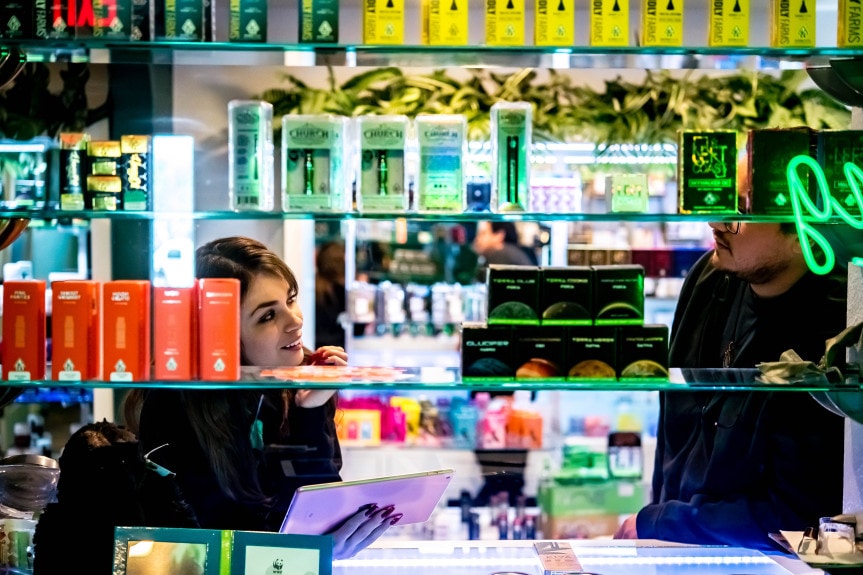
California has raised $1 billion in cannabis tax revenue since the industry kicked into gear in January 2018, according to figures recently released by the state.
The bulk of that $1.03 billion in tax money, after covering regulatory costs, has been spent on programs such as child care for low-income families, cannabis research, public safety grants and cleaning up public lands harmed by illegal marijuana grows.
While industry insiders and advocates are celebrating those numbers, they’re also raising a flag about stagnating revenues and ongoing layoffs. Those hurdles, many say, can be fixed if regulators make key changes, including a seemingly counterintuitive push to lower the state’s cannabis tax rate.
In 2016, when California voters approved the legalization of recreational cannabis, officials projected that once the industry was mature it would generate $1 billion a year in taxes.
Industry Growth
Though growth has been slower than expected, and legal operators continue to be hurt by the persistence of the illicit cannabis market, cannabis tax revenues have been rising, from $72.6 million in the first three months of legalized sales in 2018 to $172.7 million in the last three months of 2019. If that growth rate holds steady in this third year, the industry will hit $1 billion in annual tax revenue in 2020.
But growth slowed significantly in the fourth quarter of 2019, according to figures released March 6 by the California Department of Tax and Fee Administration. The $2.6 million increase, or 1.5%, was the smallest quarter-to-quarter gain in tax revenue since the market kicked off. In previous quarters, increases averaged 15.5%.
“It’s an industry that was supposed to be huge, going gangbusters with the green rush,” said Zachary Pitts, chief executive of the delivery service Ganja Goddess and president of the California Cannabis Delivery Alliance.
“It has been growing, but it’s not nearly where I think people were expecting it to be.”
The problems, industry insiders say, remain largely the same as they were on day one: Most of California — three quarters of all cities and counties in the state — still ban retail shops in their borders.
Also, the federal government still says marijuana is an illegal drug on par with heroin. That means cannabis businesses can’t use traditional banks, raise capital like other industries, or write expenses off on their federal taxes.
Taxes Keep Illicit Market Alive
Perhaps most notably, the state’s entrenched illicit market is still thriving, accounting for an estimated 75% of all marijuana sales. And with high taxes and regulatory costs keeping marijuana products at licensed businesses 30% to 80% pricier than products sold at underground shops, many consumers aren’t making the switch to the licensed industry.
“Somewhere along the supply chain, we need to lower the cost of doing business,” said Jerred Kiloh, board president for the United Cannabis Business Association trade group.
All cannabis legally sold in California comes with a 15% excise tax, a cultivation tax by weight and regular state sales tax. Plus cities and counties can tack on their own taxes, which can be as high as 20%.
Some lawmakers have introduced bills to eliminate the cultivation tax and at least temporarily lower the excise tax. Similar bills failed in previous sessions, but are pending again this cycle. Supporters say they would boost tax revenue because licensed shops would see a spike in sales if they could price their products closer to underground rates.
But the state actually increased the industry’s tax rate Jan. 1 to match inflation and new market data, with marijuana retailers paying 12.5% more in taxes while cultivator taxes went up more than 4%.
It’s tough to put a number on the direct impact of that hike, Kiloh said, since other factors — from the vaping crisis to uneven enforcement — also affect the industry.
In December, for example, state regulators and local law enforcement teamed up to raid 24 unlicensed shops in Los Angeles. In the following weeks, Kiloh said surrounding licensed businesses reported a 25% jump in sales. But after a few weeks, Kiloh said those new customers seemed to evaporate.
Same goes for January, when Kiloh said licensed shops throughout the state reported an average 10% bump in sales, which they attribute to the online marijuana shop directory Weedmaps agreeing to stop listing illicit stores. But once again, sales soon dropped back to where they were, and Kiloh said they’ve been stagnant since.
In both cases, Kilosh said the only explanation they can come up with is those new customers suffered sticker shock at the higher prices for regulated products, and resumed shopping on the illicit market.


